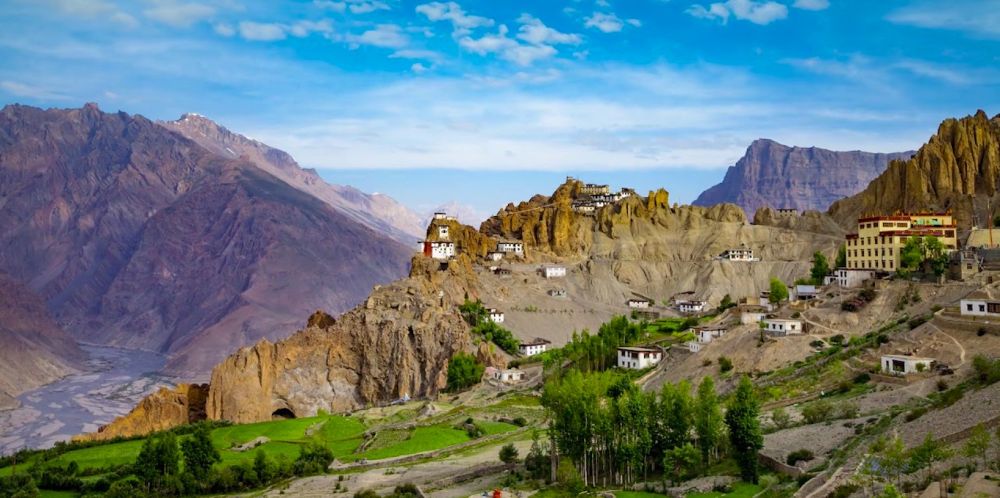

Dhankar Monastery, nestled in the serene Spiti Valley of Himachal Pradesh, India, is a destination steeped in history and spirituality. The monastery, which dates back to the 12th century, is a significant repository of Buddhist culture and was once the capital of the Spiti Kingdom. Its name, Dhankar, translates to 'fort on a cliff,' which aptly describes its strategic position overlooking the confluence of the Spiti and Pin rivers.
Initially, Dhankar Monastery served as a retreat for monks and a centre for Buddhist education. However, over the centuries, its breathtaking views, unique architectural style merging fort and monastery, and the wealth of ancient scriptures and Thangka paintings housed within its walls, began attracting the attention of international travelers and scholars.
The tourism history of Dhankar Monastery took shape with the gradual opening up of Spiti Valley to the outside world. Originally, the remote and rugged terrain made access challenging, limiting visitors mainly to adventure enthusiasts and researchers. But with improved infrastructure and growing interest in the cultural and natural beauty of the Himalayas, Dhankar Monastery has seen a steady increase in tourist footfall.
In the late 20th century, as India gained popularity as a travel destination, so did places like the Dhankar Monastery. The Indian government and various international organizations, recognizing the cultural significance of Spiti Valley, started initiatives to promote sustainable tourism in the region. This was coupled with efforts to preserve the fragile ecosystem and the unique heritage of Dhankar Monastery.
By the early 21st century, Dhankar Monastery had emerged as a prime attraction for those seeking spiritual journeys, cultural immersion, and the grandeur of the Himalayas. Inclusions of homestays and local guides have enabled tourists to experience the local lifestyle intimately.
Sustainable and Responsible Tourism has become the latest trend in the Spiti Valley. Visitors are more aware of environmental issues and are contributing to the conservation of the area's heritage. Initiatives that promote eco-friendly travel, such as waste management programs and use of solar energy, are increasingly adopted by local businesses
Cultural and Spiritual Tourism continues to be an essential aspect of travel to Dhankar Monastery. The monastery is host to several festivals and rituals throughout the year, which have become a significant draw for tourists looking to experience the rich traditions of the region firsthand.
Adventure Tourism also plays a vital role in the region's appeal, with trekkers and hikers venturing to explore the rugged trails around the monastery, including the famed trek between Dhankar Monastery and the stunning Dhankar Lake.
The popularity of Photography Tours has risen, as photographers from around the globe come to capture the surreal landscapes, vibrant cultural scenes, and unparalleled architectural beauty of the Dhankar Monastery.
In conclusion, Dhankar Monastery's unique blend of spiritual heritage and natural beauty has carved out a distinctive niche in the tourism industry of Himachal Pradesh. As awareness spreads and appreciation for remote, untouched destinations increase, tourism at Dhankar Monastery is poised to grow, with a strong emphasis on preserving the essence that made it a sought-after destination for centuries.